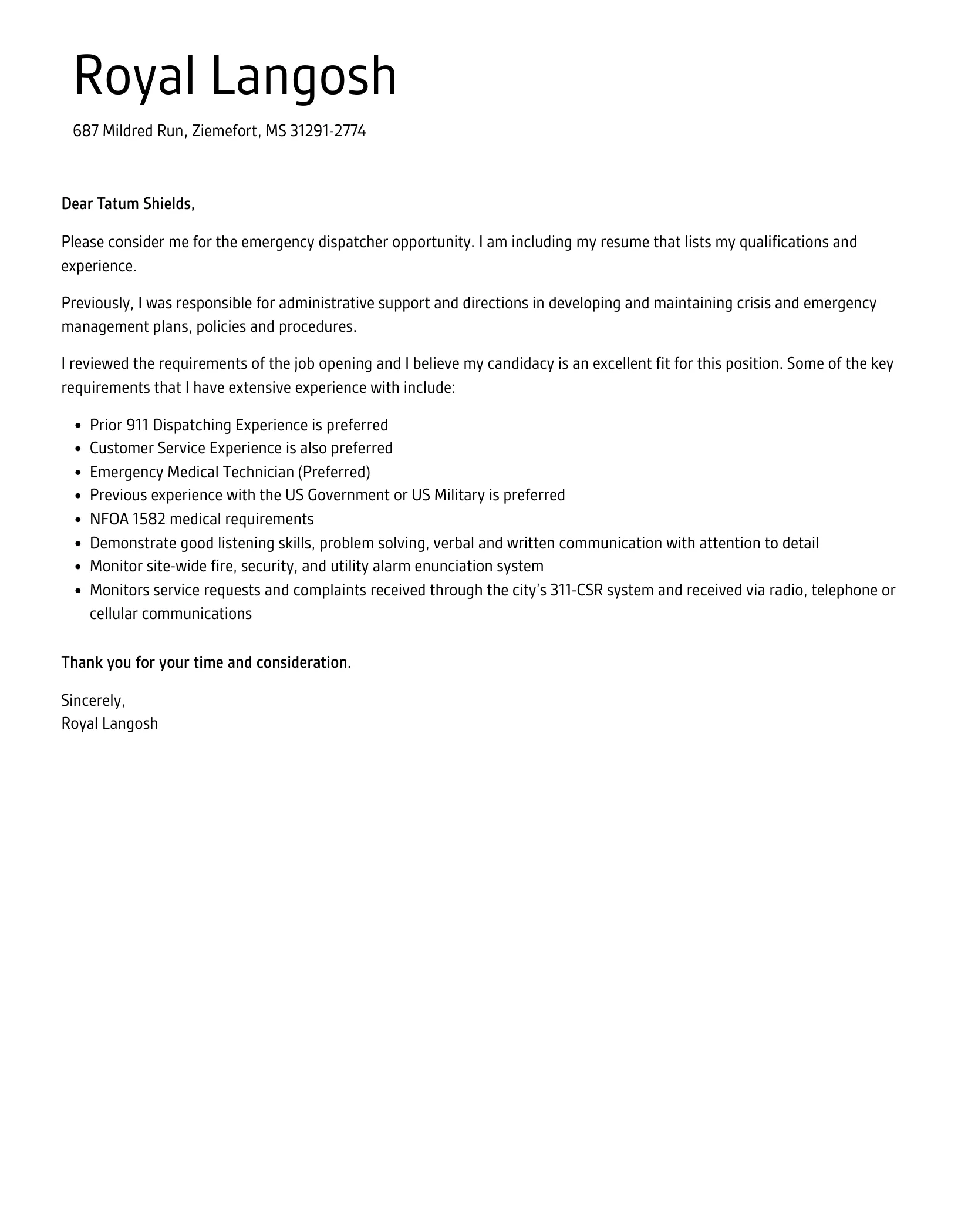Crafting Your Emergency Dispatcher Cover Letter
A compelling emergency dispatcher cover letter is your first impression on a potential employer. It’s your chance to showcase your skills, experience, and passion for the role. A well-crafted letter can significantly increase your chances of landing an interview. This guide provides a comprehensive overview of creating a cover letter that grabs attention and sets you apart from the competition. From highlighting essential skills to demonstrating your dedication, we’ll walk you through each step of the process, ensuring your letter effectively communicates your qualifications and enthusiasm for becoming an emergency dispatcher.
Understanding the Importance of a Cover Letter
Why is a cover letter so important? It’s more than just a formality; it’s a critical tool for demonstrating your personality, enthusiasm, and understanding of the role. A cover letter allows you to personalize your application, connecting your skills and experiences to the specific requirements of the job and the values of the organization. It provides the context that a resume alone often lacks. It allows you to go beyond simply listing your qualifications; you can demonstrate your communication skills, explain gaps in your resume, and express why you are the ideal candidate. A strong cover letter can often compensate for a lack of direct experience. It gives you an opportunity to showcase your personality.
Key Components of a Strong Cover Letter
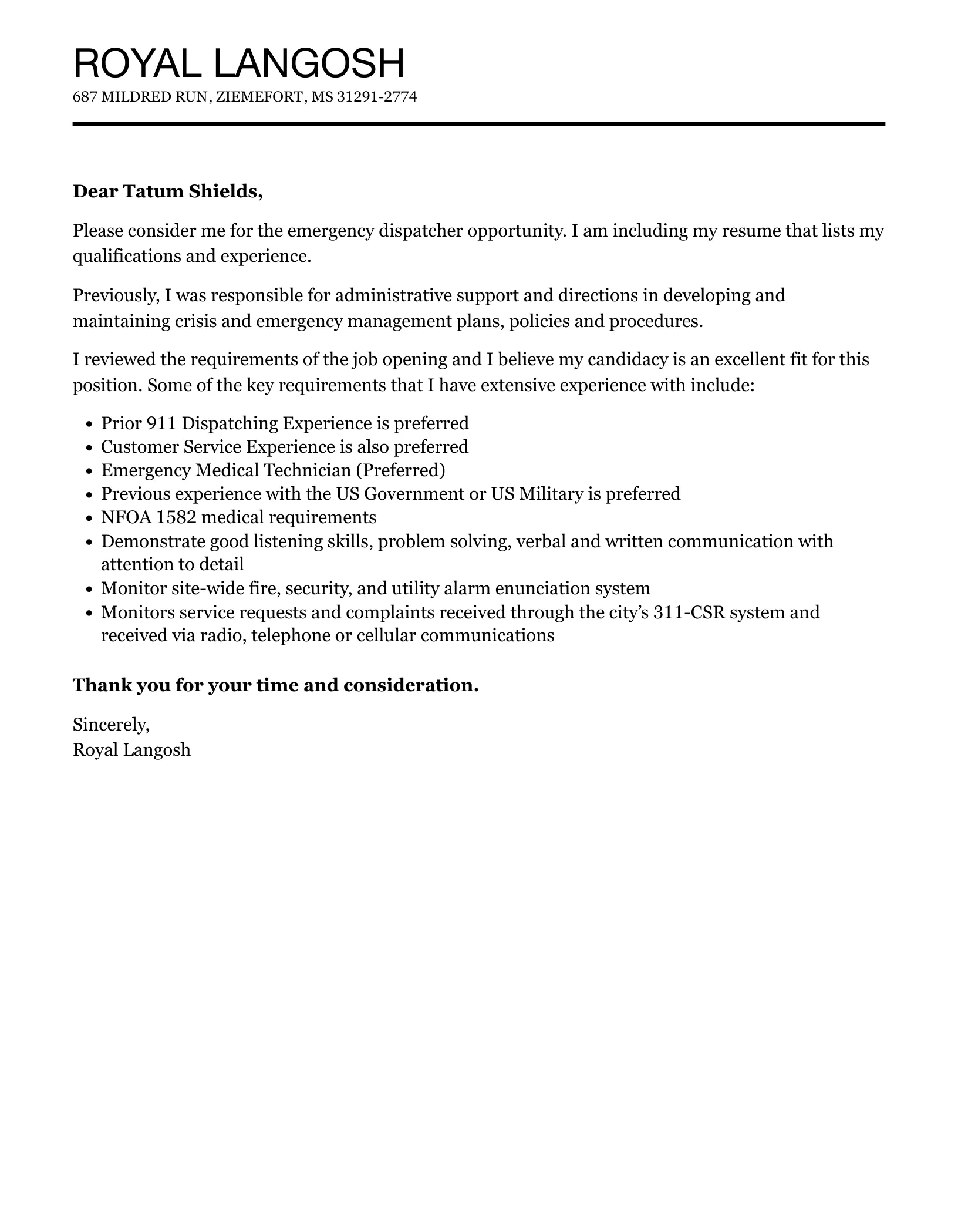
A strong cover letter is structured, clear, and concise. It should include an introduction, body paragraphs highlighting your relevant skills and experience, and a compelling conclusion. Each section plays a crucial role in presenting you as a qualified candidate. Before you start writing, research the specific requirements of the job and the values of the organization to tailor your letter effectively. Clearly state the position you’re applying for, and mention where you found the job posting. The goal is to capture the reader’s attention immediately. Then, in the body paragraphs, provide detailed examples of your skills and experience that align with the job description. Always end with a clear call to action.
Contact Information & Introduction
Start your cover letter with your contact information and the date at the top. Then, address the letter to the hiring manager if possible; otherwise, use a professional greeting like “Dear Hiring Manager.” The introduction should be brief and engaging. State the position you’re applying for and how you learned about the opportunity. Briefly mention why you’re interested in the role and the organization. Avoid generic opening lines; instead, express your enthusiasm and state the value you can bring to the team. You want to capture their attention quickly so they’ll continue reading and learn more about what you bring to the table.
Highlighting Relevant Skills
The heart of your cover letter should focus on the skills that make you a great emergency dispatcher. This is where you can go into detail about the specific skills you possess. The job description is the blueprint. Use it to find the keywords related to the skills they are looking for. Always explain how your skills align with the job requirements, giving examples that demonstrate your abilities. Quantify your achievements whenever possible. For instance, you can detail the number of calls you handled or how your quick actions contributed to a positive outcome. Focus on the skills that are most relevant to the role. The ability to remain calm under pressure is crucial, and you should provide specific examples of your ability to do so.
Communication Skills
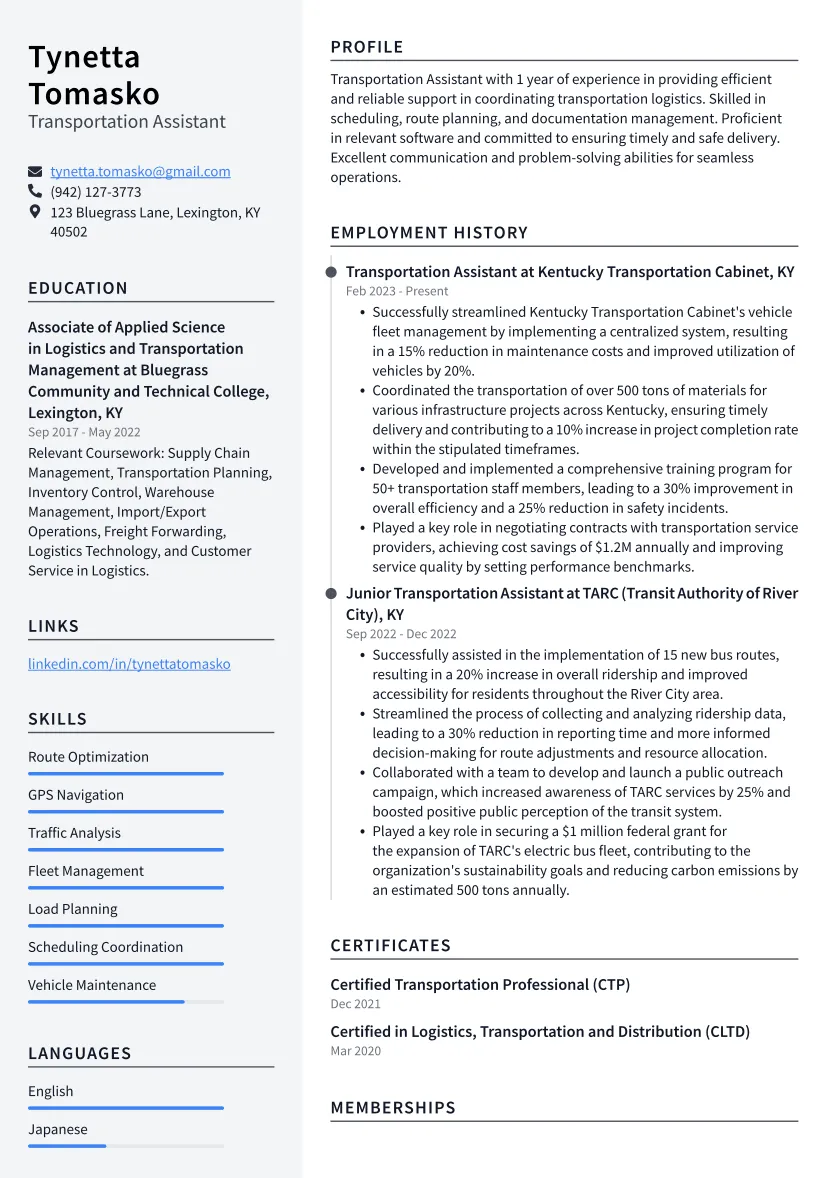
Exceptional communication skills are vital for an emergency dispatcher. Demonstrate your ability to communicate clearly and effectively, both verbally and in writing. This includes active listening, the ability to convey information accurately, and the ability to adapt your communication style to different situations. Provide examples of times you had to communicate critical information under pressure, such as relaying instructions to callers or coordinating with emergency responders. Mention any training you have in communication, such as crisis communication or conflict resolution, and highlight your ability to remain professional and empathetic even in high-stress situations. Being able to connect to the caller on the other line and know their situation and act quickly is essential.
Problem-Solving Abilities
Emergency dispatchers constantly solve problems, often in life-or-death situations. Showcase your problem-solving skills by providing examples of how you’ve assessed situations, made quick decisions, and taken appropriate action. Describe situations where you had to think on your feet, analyze complex information, and make sound judgments under pressure. Highlight your ability to prioritize tasks, manage multiple responsibilities, and adapt to changing circumstances. Mention any experience you have with critical thinking or decision-making frameworks. Detail any specific instances where your problem-solving skills helped prevent a negative outcome or saved time. Being able to quickly determine what is needed is vital to the role.
Technical Proficiency
Dispatchers rely heavily on technology, so it’s crucial to highlight your technical skills. Mention your proficiency with relevant software, such as Computer-Aided Dispatch (CAD) systems, radio communication equipment, and database management tools. Describe any training or certifications you have in these technologies. If you’ve worked with specific dispatching systems, include the names of those systems in your letter. Be sure to mention your typing speed and accuracy and demonstrate your ability to quickly and accurately enter and retrieve information. If you have experience with GIS software or other mapping tools, include this as it is also relevant. Staying up to date with the latest software and hardware is essential in this role.
Demonstrating Experience
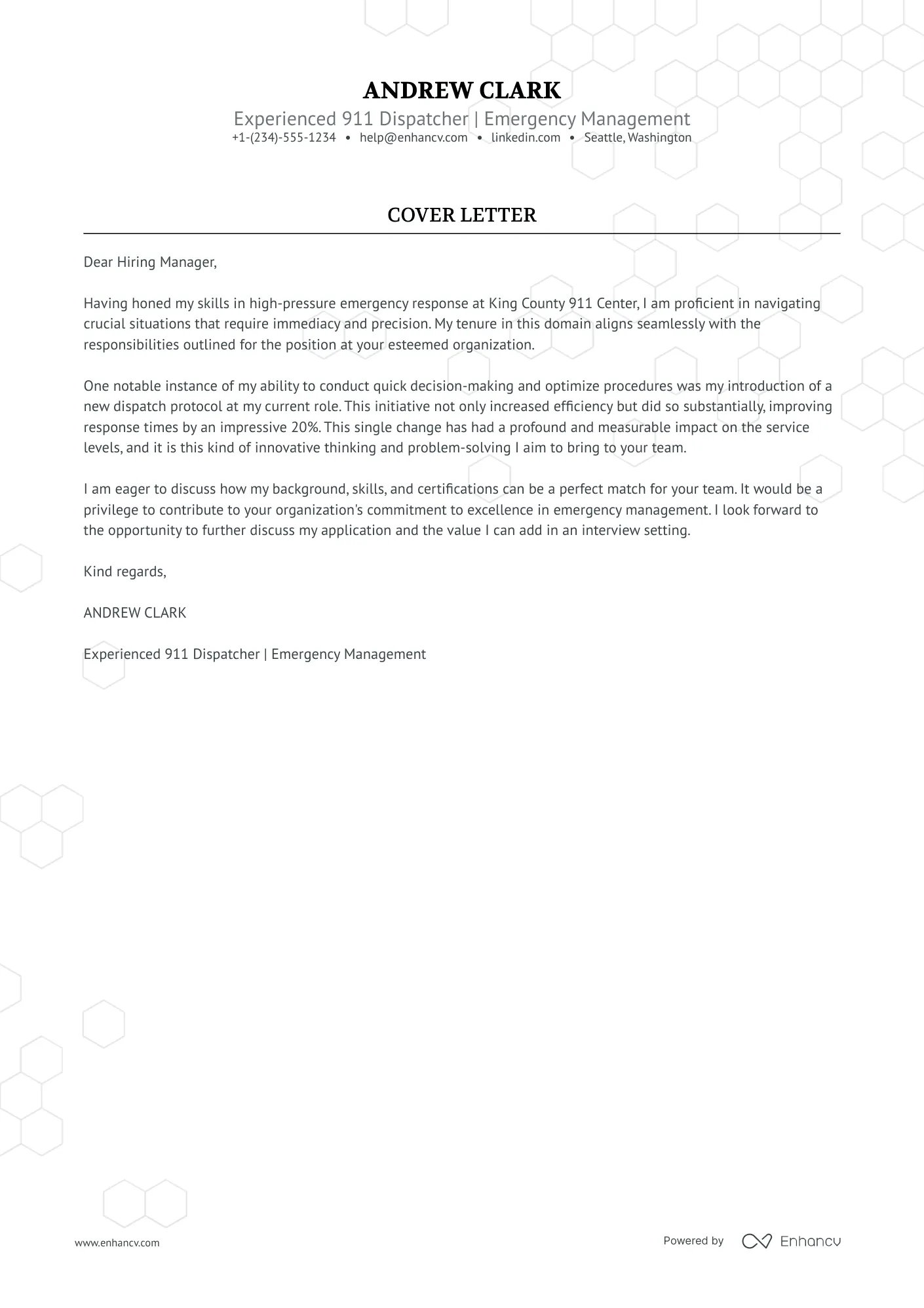
Your experience is a crucial factor. Whether you have direct experience as an emergency dispatcher or related experience, it’s important to showcase your qualifications. When describing your previous roles, emphasize the skills and achievements that are most relevant to the emergency dispatcher position. Use action verbs to describe your responsibilities and accomplishments. Quantify your achievements whenever possible, such as the number of calls handled, the accuracy of your work, or any improvements you made to the efficiency of a dispatching process. Show how your previous roles have prepared you for this new position. Being prepared to react calmly to chaos is critical to success.
Previous Dispatcher Roles
If you have previous experience as an emergency dispatcher, be sure to highlight this prominently. Provide detailed descriptions of your responsibilities, the systems you worked with, and your key achievements. Mention the types of emergencies you handled, and how you managed them. If you have any specific accomplishments, such as receiving awards or commendations, or implementing improvements to the dispatching process, be sure to include them. It is helpful to list specific details of what you did, the outcome of that process, and what you learned from it. Be specific and detailed, using quantifiable metrics to highlight your accomplishments. The experience is what will set you apart from other candidates.
Volunteer Experience & Relevant Training
Even if you don’t have direct experience as an emergency dispatcher, you can still make a strong case for yourself. Include volunteer experience, especially if it involved communication, problem-solving, or working under pressure. Highlight any training you have completed, such as certifications in CPR, first aid, or emergency medical dispatch (EMD). If you’ve volunteered with a fire department, ambulance service, or other emergency services, detail your responsibilities and the skills you gained. Emphasize any experience that demonstrates your ability to handle stressful situations, follow protocols, and work as part of a team. Any training that relates to this field should also be showcased. These experiences, even if not in dispatching specifically, will still make you stand out from the crowd.
Showcasing Your Passion & Enthusiasm
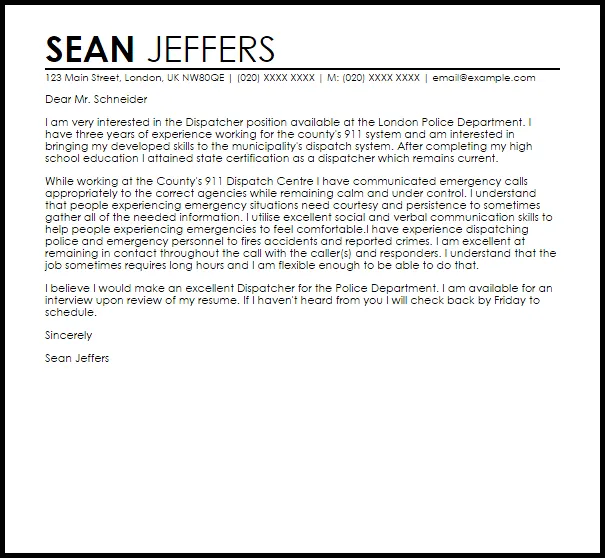
Expressing your passion and enthusiasm is just as important as highlighting your skills and experience. Emergency dispatching is a demanding job, and employers want to see that you are genuinely interested in the role. Explain why you are drawn to the profession, and what motivates you to help others. Talk about any personal experiences that have influenced your interest in emergency services. This will help demonstrate your understanding of the challenges and rewards of the job. Show your commitment to the organization and its mission, and demonstrate that you are willing to go the extra mile. Your enthusiasm for this role will shine through with every word you write.
Expressing Your Dedication
Emphasize your dedication to providing support and assistance in times of crisis. Highlight your ability to remain calm under pressure, and your commitment to the safety and well-being of others. Explain how your values align with those of the organization, and what you hope to achieve in the role. Be sure to showcase your commitment to teamwork and your willingness to learn and grow. Show that you are willing to work long hours and deal with stressful situations. Demonstrate your ability to handle the emotional toll of dealing with emergencies and how you maintain a professional demeanor under challenging circumstances. Employers want to see someone who is willing to put in the effort and be dedicated to the job.
Researching the Organization
Before you write your cover letter, take the time to research the organization you are applying to. Understand their mission, values, and recent activities. Mention any specific programs or initiatives that resonate with you. This shows that you are genuinely interested in the organization and have taken the time to learn about them. Tailor your cover letter to align with the organization’s values and highlight how your skills and experience can contribute to their goals. Find out about the organization’s culture and values, and explain how you would fit in. Refer to their website, social media, and any news articles. Researching the organization also helps you to better understand the responsibilities of the job.
Formatting and Proofreading
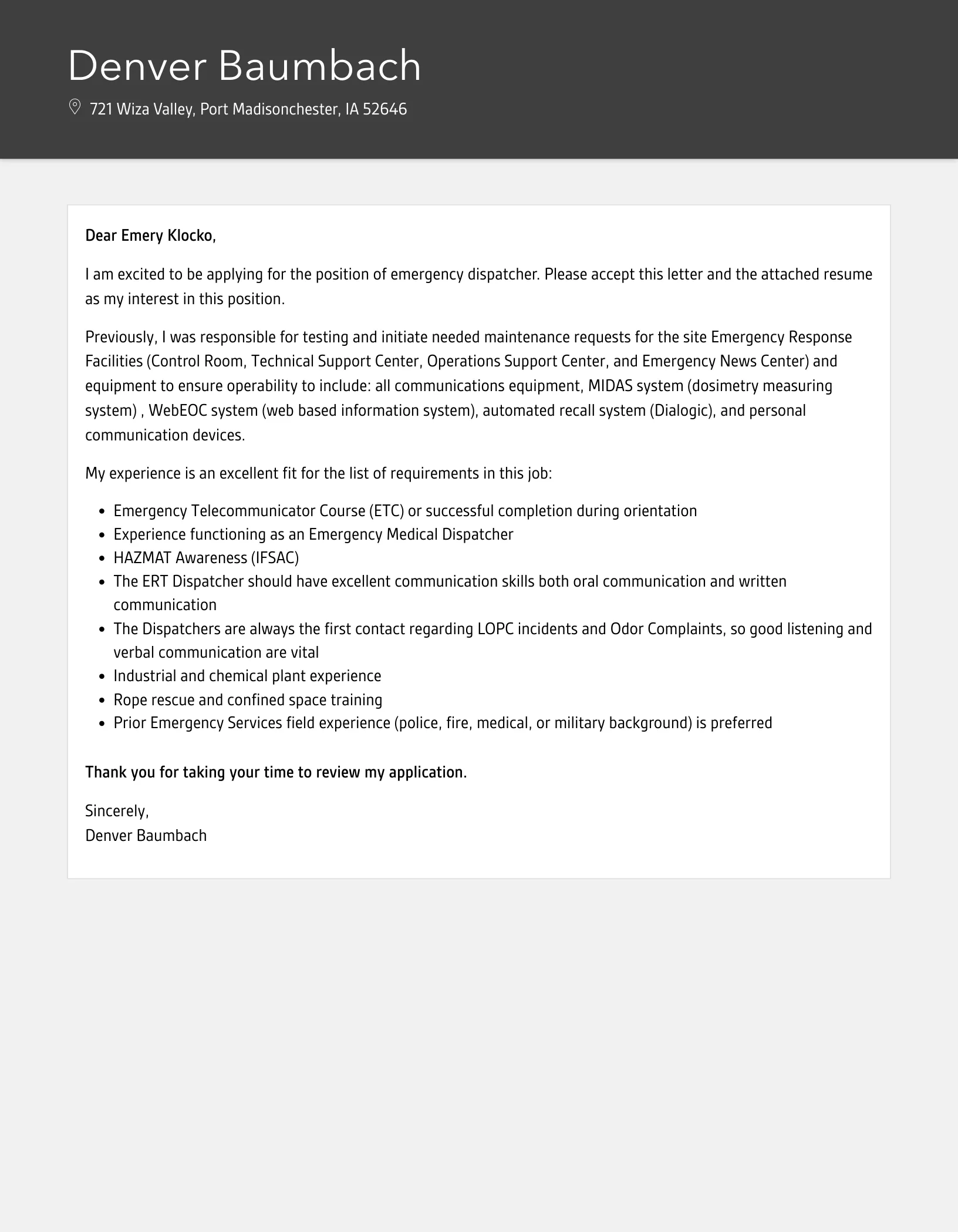
Proper formatting and proofreading are essential to creating a professional cover letter. Use a clear and easy-to-read font, such as Times New Roman or Arial, and ensure your letter is well-organized. Keep the letter concise and to the point, ideally within one page. Errors and typos can detract from your application, so make sure you take the time to proofread your work carefully. Ask someone else to review your cover letter for any mistakes you might have missed. It shows that you are careful, detailed, and can pay attention to every element of a project. A well-formatted and error-free cover letter gives a positive first impression.
Formatting Best Practices
Use a professional font and format your cover letter with clear headings, spacing, and bullet points. Maintain a consistent layout throughout the document. Use a standard business letter format, with your contact information at the top, followed by the date and the recipient’s information. Keep the paragraphs short and easy to read. Avoid using overly long sentences. Ensure that your cover letter is one page in length, as this is generally the preferred length for most hiring managers. Choose a font size that is easy to read and maintains a professional look. Use bolding or italics sparingly to emphasize key points. Formatting helps make your content easier to read.
Proofreading and Editing
Proofreading is a crucial step in ensuring your cover letter is free of errors. Check for grammar, spelling, and punctuation mistakes. Read your letter aloud to catch any awkward phrasing. Ask a friend or family member to review your letter. A second pair of eyes can catch mistakes you may have missed. Pay attention to the details and make sure your letter is error-free. Run a spell check, and grammar check to identify any errors. Make sure all of the information is accurate. Proofreading shows the care you take with your work and is vital for your application to be seen as professional. Always ensure that all aspects are accurate and professional.
Closing Your Cover Letter
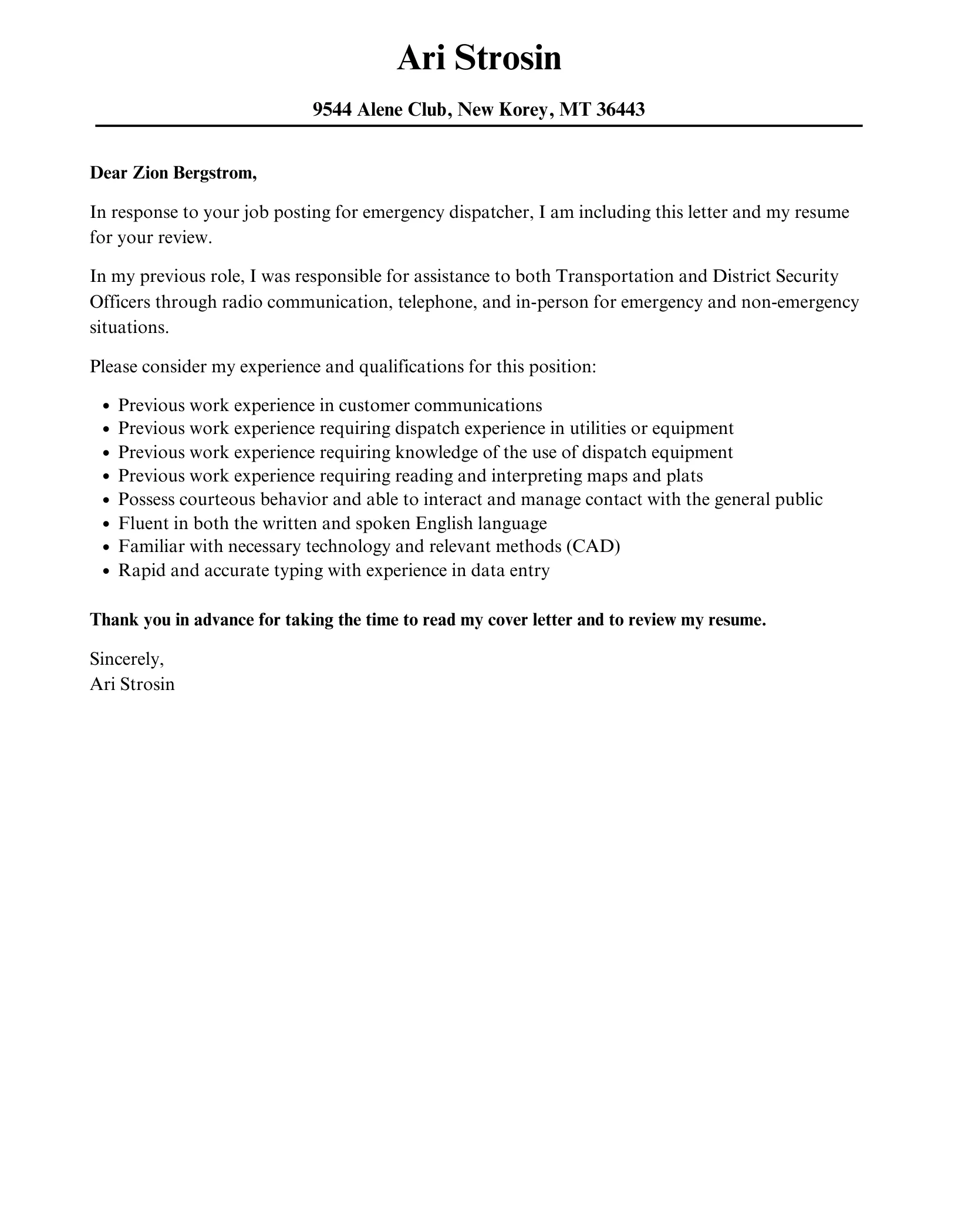
The closing is an opportunity to reiterate your interest in the position and leave a positive final impression. In your closing, thank the reader for their time and consideration. Reiterate your enthusiasm for the position and briefly summarize your key qualifications. State your availability for an interview. Include a call to action, such as “I look forward to hearing from you soon.” or “Thank you for your time and consideration; I welcome the opportunity to discuss my qualifications further.” Ending your cover letter on a strong note is vital to making a lasting positive impression.
Thank You and Call to Action
End your cover letter with a professional closing, such as “Sincerely” or “Best regards,” followed by your typed name. Below your closing, leave space for your signature if you are submitting a physical copy. Make sure to include a clear call to action, such as “I am available for an interview at your earliest convenience” or “I look forward to hearing from you soon.” Provide your contact information again. Including a thank you shows that you are polite, appreciative, and value the potential opportunity. Reiterate your interest in the position and your commitment to the organization. A strong closing helps to set you apart from other candidates and leave a positive impression. A great cover letter is an excellent way to make a fantastic impression.
